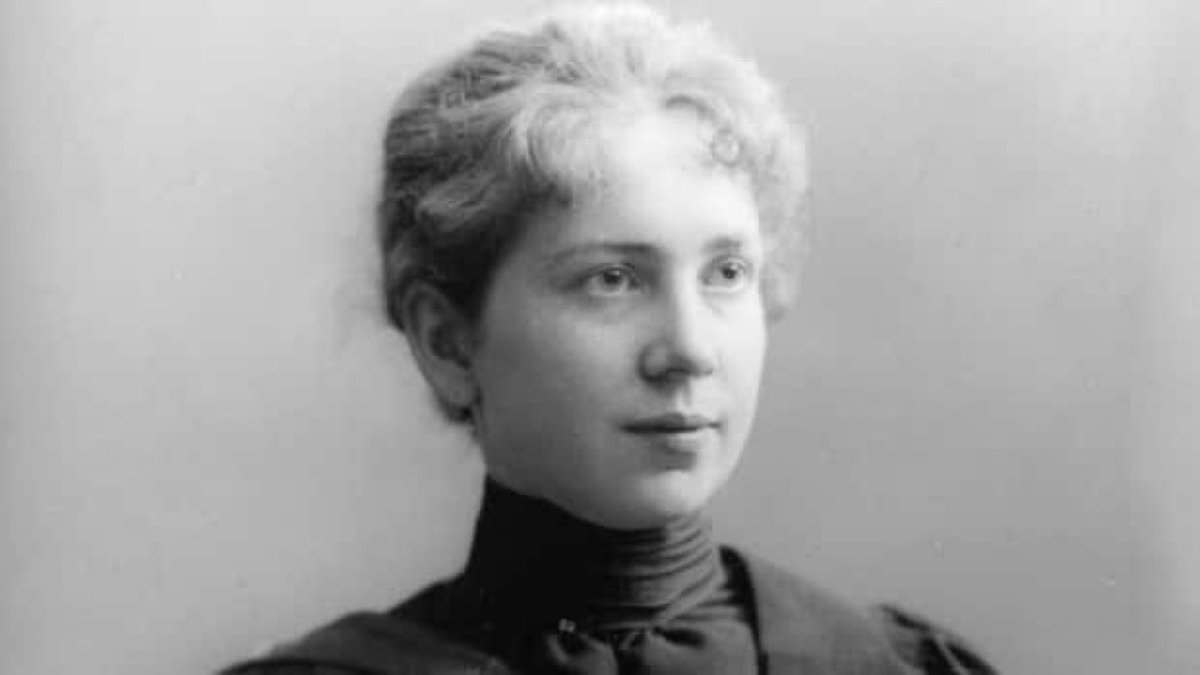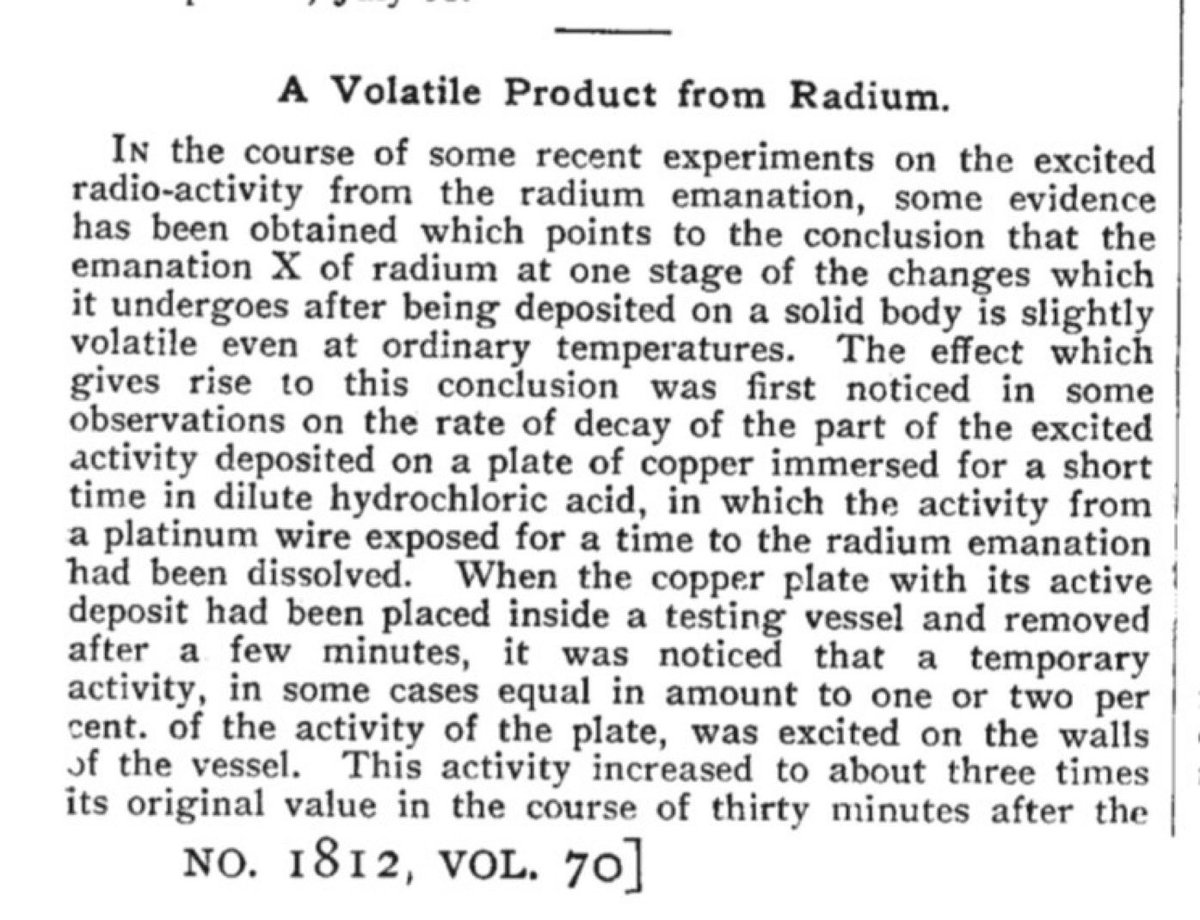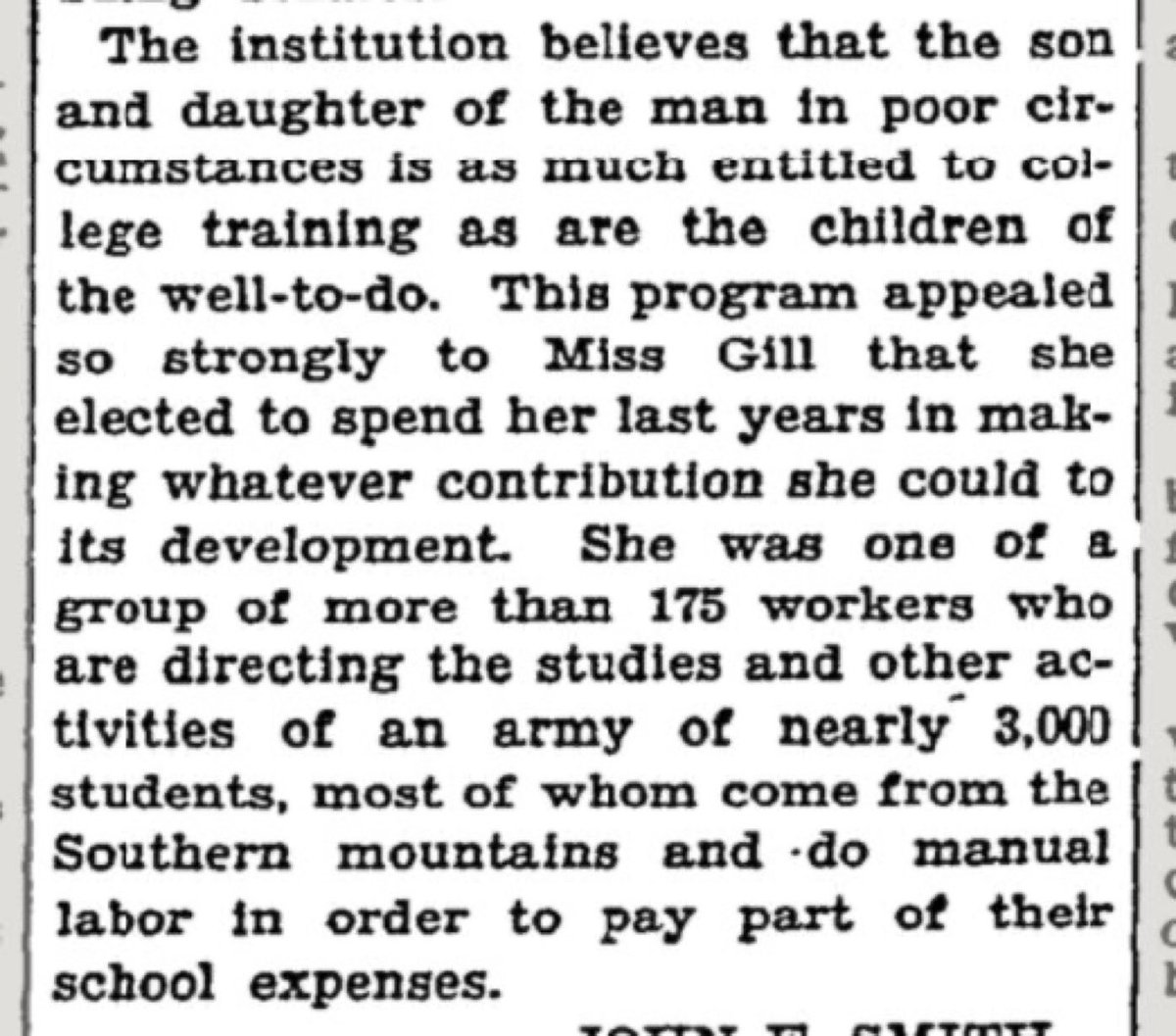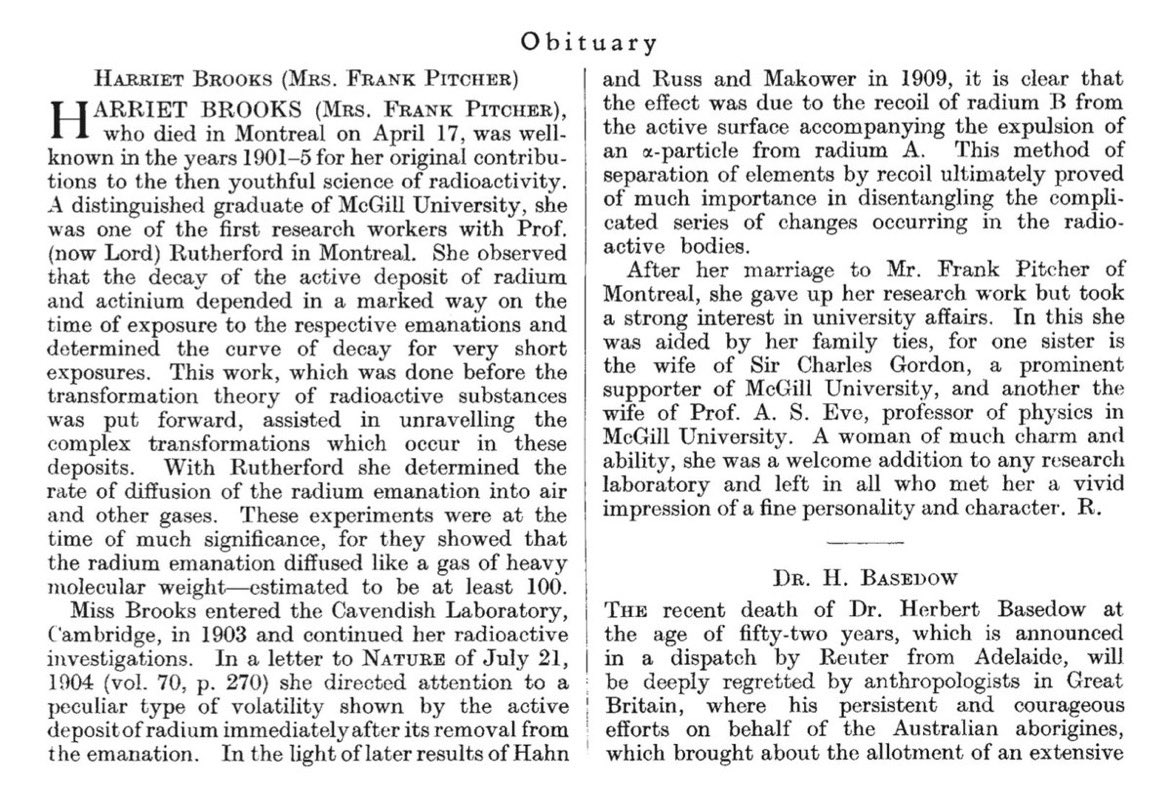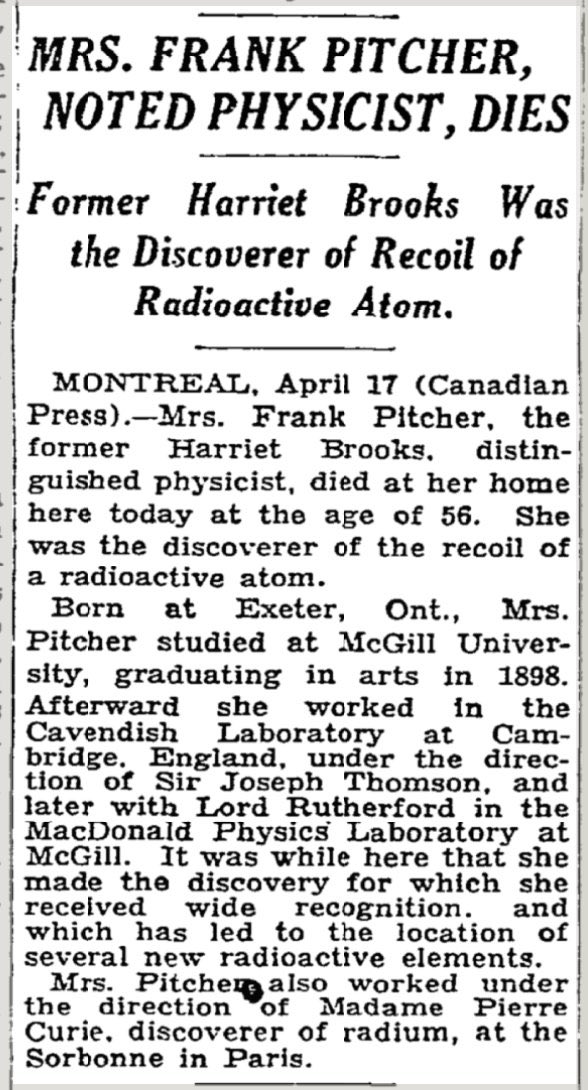The nuclear physicist Harriet Brooks, who was probably the first person to notice the recoil of an atomic nucleus due to emissions during nuclear decay, was born #OTD in 1876.
Credit: Notman Archives/Musée McCord
Credit: Notman Archives/Musée McCord
Brooks was the first Canadian woman to work in the nascent field of nuclear physics. Her advisor and colleague Ernest Rutherford —she was his first grad student— lauded her work as a critical step in sorting out the mechanisms of nuclear decay.
Brooks completed her Master's degree under Rutherford's supervision in 1901. She was the first woman to receive a Master's from McGill, which did not have a PhD program until 1909.
In 1903, Brooks and Rutherford identified radon, a heavy radioactive gas emitted by radium. Rutherford referred to these sorts of gasses, released by elements like radium and thorium, as "emanations."
In July of 1904, Harriet Brooks sent a letter to @nature that noted an usual volatile behavior in active radium samples removed from their emanation.
https://www.nature.com/articles/070270b0
https://www.nature.com/articles/070270b0
Five years later the cause of this volatility was confirmed by Hahn, Russ, & Markower. They explained it as the recoil of Radium B, produced when Radium A emitted an α-particle, from the surface of the sample. (Various decay products of Radium-266 were referred to as Radium A-G)
This is why Brooks is credited as the first person to observe the recoil of a nucleus due to nuclear decay!
In 1906, while working at Barnard College in New York, Brooks made plans to marry. The Dean of the college had a fit, and insisted that she would have to resign her position if she followed through with the nuptials.
Dean Laura Drake Gill said "...the College cannot afford to have women on the staff to whom the college work is secondary; the College is not willing to stamp with approval a woman to whom self-elected home duties can be secondary."
(Gill's hierarchy of home and faculty duties is in sharp contrast to her otherwise progressive views about education. She ended her career at Berea College in Kentucky as an advocate for co-ed students in an especially poor part of Appalachia.)
https://timesmachine.nytimes.com/timesmachine/1926/02/09/119061022.html?action=click&contentCollection=Archives&module=ArticleEndCTA®ion=ArchiveBody&pgtype=article&pageNumber=24
https://timesmachine.nytimes.com/timesmachine/1926/02/09/119061022.html?action=click&contentCollection=Archives&module=ArticleEndCTA®ion=ArchiveBody&pgtype=article&pageNumber=24
Brooks saw this as the height of hypocrisy for a women's college, and felt obligated to stand up for others in her position.
https://books.google.com/books?id=xtcmlaLog8MC&q=%22+think+it+is+a+duty+I+owe%22#v=snippet&q=%22%20think%20it%20is%20a%20duty%20I%20owe%22&f=false
https://books.google.com/books?id=xtcmlaLog8MC&q=%22+think+it+is+a+duty+I+owe%22#v=snippet&q=%22%20think%20it%20is%20a%20duty%20I%20owe%22&f=false
The marriage was cancelled for other reasons, but Brooks resigned anyway and sailed off to France where she worked with the Curies at the Sorbonne.
(As an aside: Resigning on principle and then sailing to France to work with the Curies is a hall-of-fame move.)
In 1907 Brooks married Frank Pitcher and they settled in Montreal. Rutherford had recommended her for a fellowship in the UK, but she decided to retire from physics. The two of them remained close.

 Read on Twitter
Read on Twitter